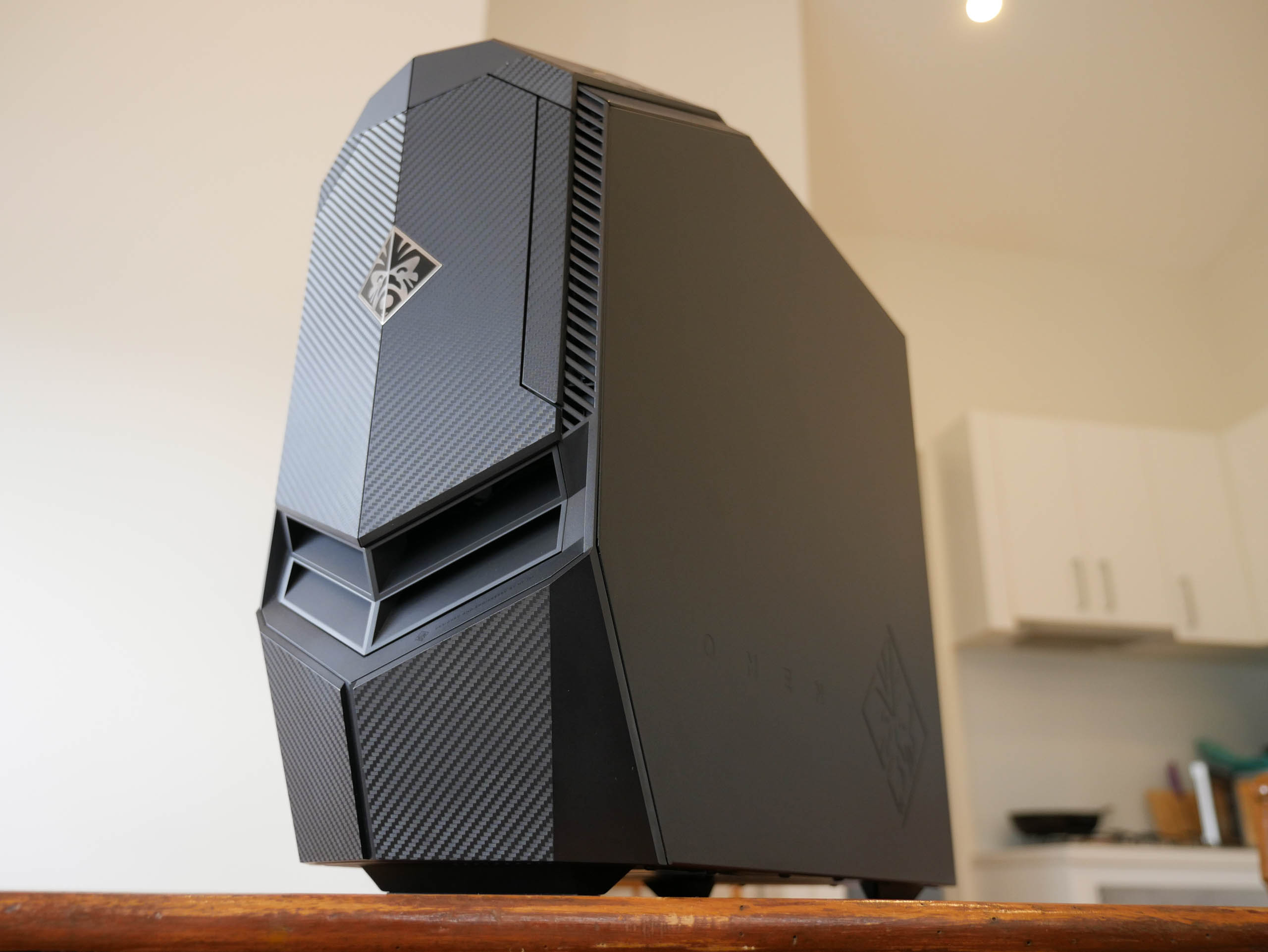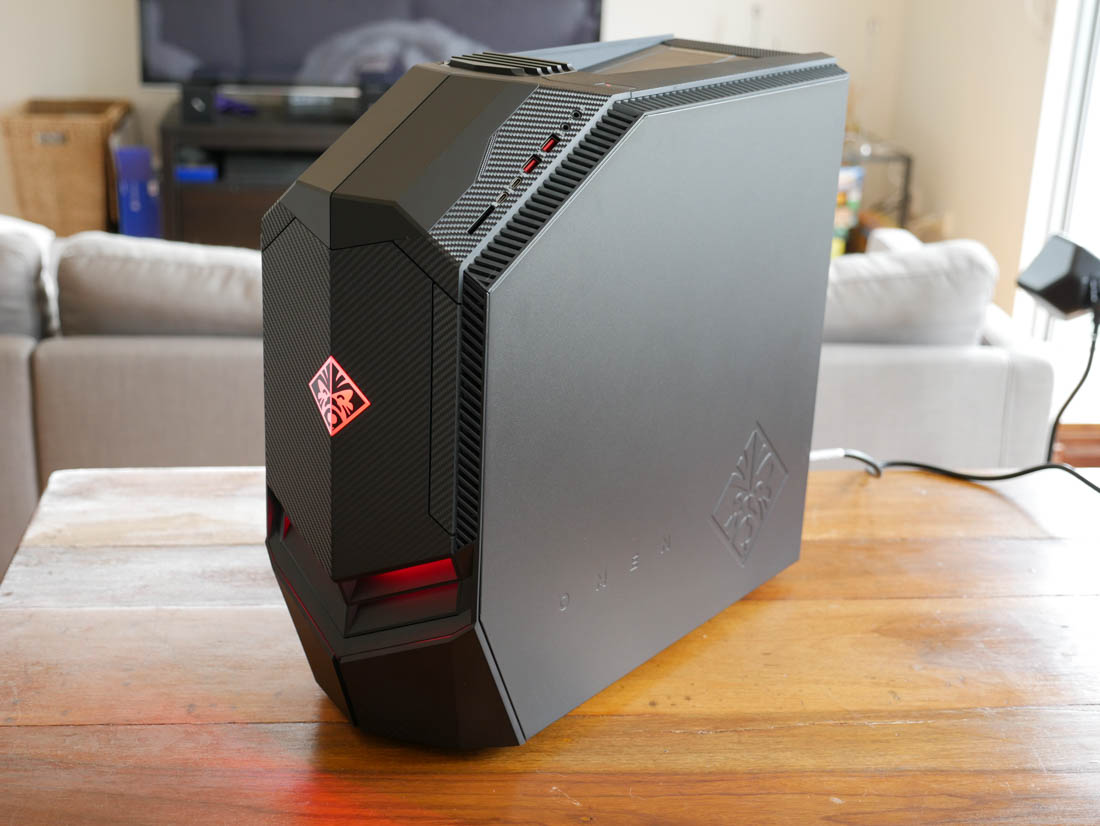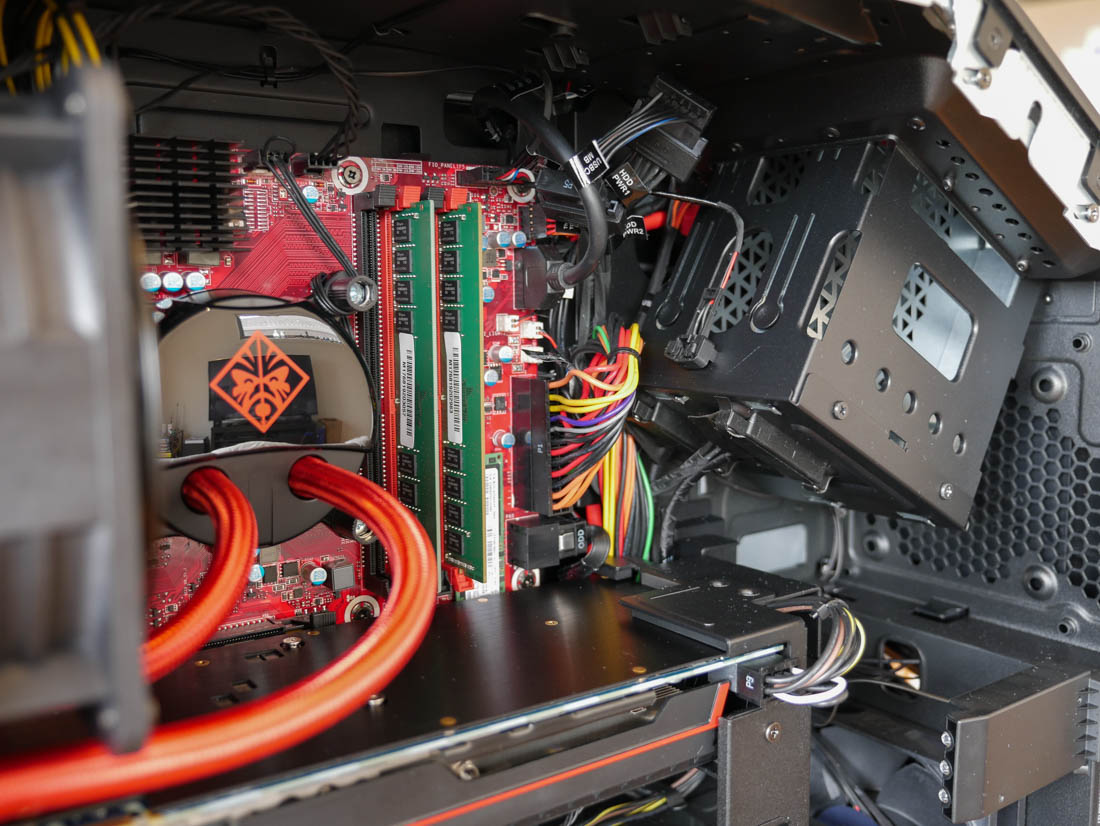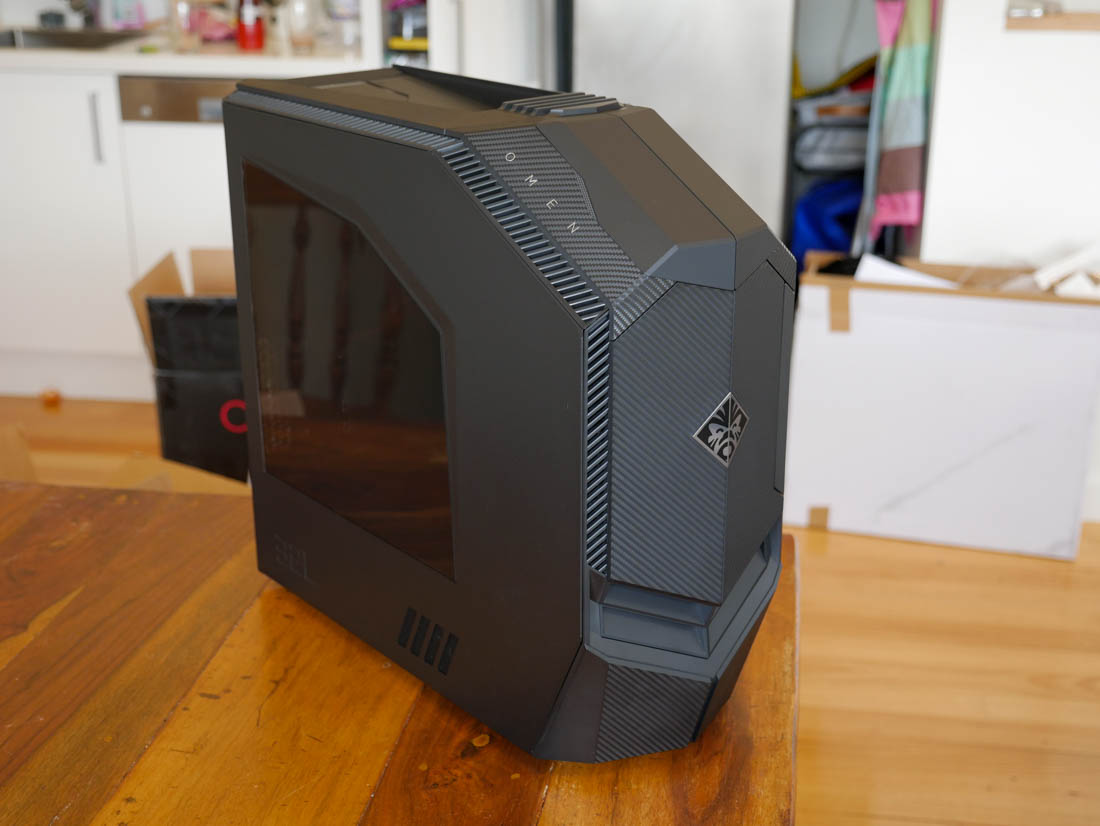Wrap Up: Highly Configurable and Good Value
If you're looking to purchase a pre-built gaming desktop that prioritizes performance over ridiculous designs and over-the-top liquid cooling, the HP Omen Desktop is a great choice. It's not ludicrously expensive, yet it provides solid hardware, decent thermals, and loads of configuration options to suit a wide range of budgets.
The Omen Desktop case looks quite decent. HP has managed to achieve a lot with a mostly plastic exterior, a few red LEDs and some interesting flaps. The carbon fiber pattern looks neat, the angles are aggressive but surprisingly pleasing, and I love features like the easy-access hard drive bays and the toolless side panel.
People will know this is a gaming desktop without HP resorting to "look at me" design features like non-standard shapes and RGB lighting.
There's such a wide range of hardware choices it's hard to say how this system will perform in general. My test system - a Ryzen 7 1800X and GeForce GTX 1080 - was just as fast as we've seen from this hardware in custom-built rigs; in other words it was great for 1440p gaming or 1080p high-refresh. Considering base models start with a Ryzen 5 1600 and a Radeon RX 580, I think any option here will deliver a decent experience, though you can push this all the way up to GTX 1080 Tis and dual GTX 1080s if you have the cash.
I was pleased with the cooling solution used here. The system runs quiet while in games, and temperatures on both the CPU and GPU are respectable. The closed-loop liquid cooler on the CPU isn't the most insane setup, though it can handle a decent overclock nonetheless: the Ryzen 7 1800X in my unit comfortably hit 3.9 GHz without a massive toll on temperatures or noise levels. It was a similar story with the GPU: plenty of overclocking headroom.
Standard parts are used across the board, so it should be very straightforward to add more storage, swap out the graphics card, change CPUs and even do an entire platform upgrade down the track. My review unit came with 16 GB of RAM and two free DIMM slots, plus several spare 3.5-inch drive bays and an M.2 SSD. There are only four SATA ports and a single PCIe x16 slot, which is the most limiting aspect of the system's upgradeability, though otherwise I was impressed.
Before concluding this review with a discussion on pricing, I will make some recommendations on configurations. The base model comes with just a hard drive installed, so I would immediately suggest upgrading to something with an SSD. The 256GB SSD option costs an additional $215, which is a little steep, though the Samsung PM961 is a great drive. Otherwise you could install your own M.2 SSD for $120 or more.
I'd also steer clear of the Ryzen 7 1800X model, even though I was sent it to review. The Ryzen 7 1700 is available for $140 less, and overclocks to the same level of performance as the 1800X without any issue. I'd also tend to avoid the non-K Intel CPU options; it may cost $50-60 more for an unlocked CPU, but the gains you can get from overclocking are definitely worth it. As for the GPU, get whatever is the most powerful within your budget, though I'd avoid SLI or CrossFire setups.
Those looking for a budget system, I'd recommend the Ryzen 5 1600, 16GB of RAM, a 256GB SSD with 2TB HDD, and an RX 580 4GB for $1254.99. Whipping up this sort of system yourself would cost around $1,200 for parts equivalent to the Omen Desktop (including a Windows 10 license), so this is outstanding value for a pre-built system.
With a bit of budget hunting you could get everything for a bit cheaper than this, but in any case, there's nothing outrageous about the Omen's price.
For something higher-end, I'd look at the Intel Core i7-7700K, 16GB of RAM, 256GB SSD and 2 TB hard drive, along with the GeForce GTX 1080. This sort of configuration would set you back just over $2,000. Here the price premium for the Omen Desktop relative to a self-built system is around $250.
Shopping Shortcuts
All things considered, it's pretty easy to recommend the HP Omen Desktop for someone after a pre-built gaming desktop. It succeeds strongly in most key areas, particularly when it comes to value at the low end, and that's what I love to see from desktops like this.
Pros: Loads of configuration options, and entry-level models are great value. Respectable design with decent cooling, easy upgradeability and a fair bit of overclocking headroom.
Cons: OEM motherboard with limited SATA and PCIe ports. Value isn't as strong with upper-tier configurations.




